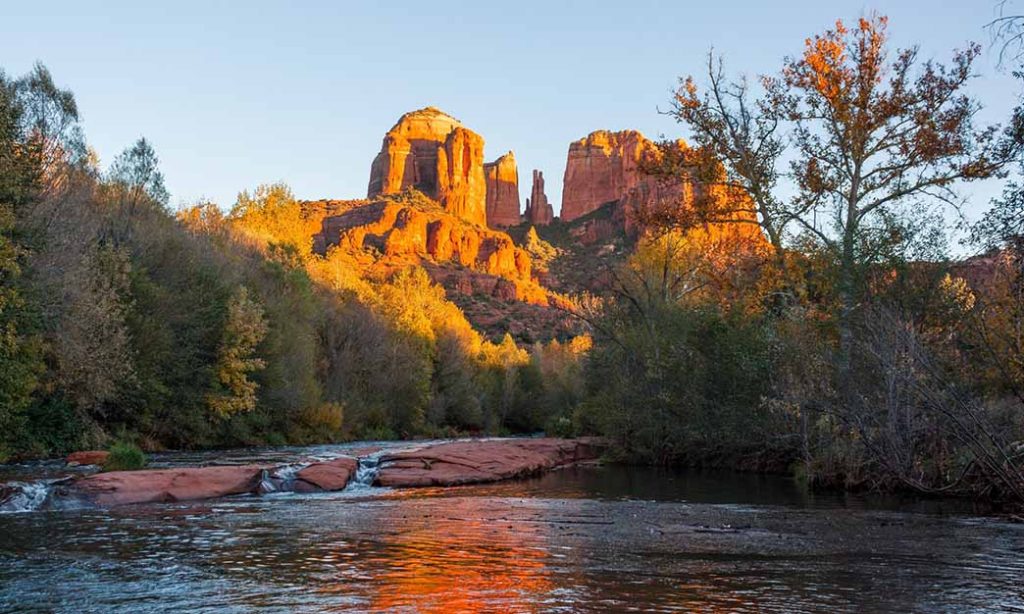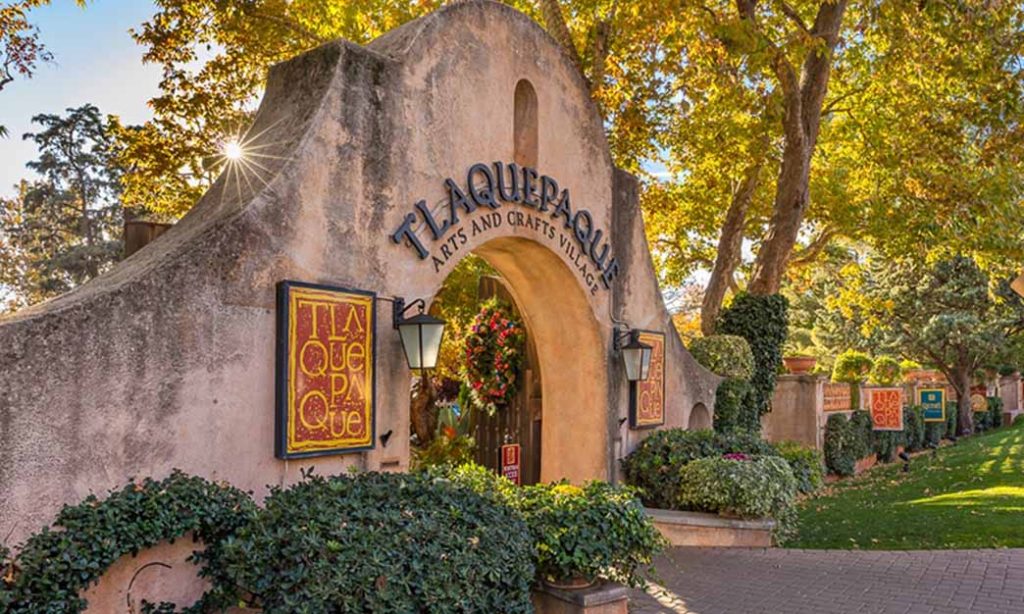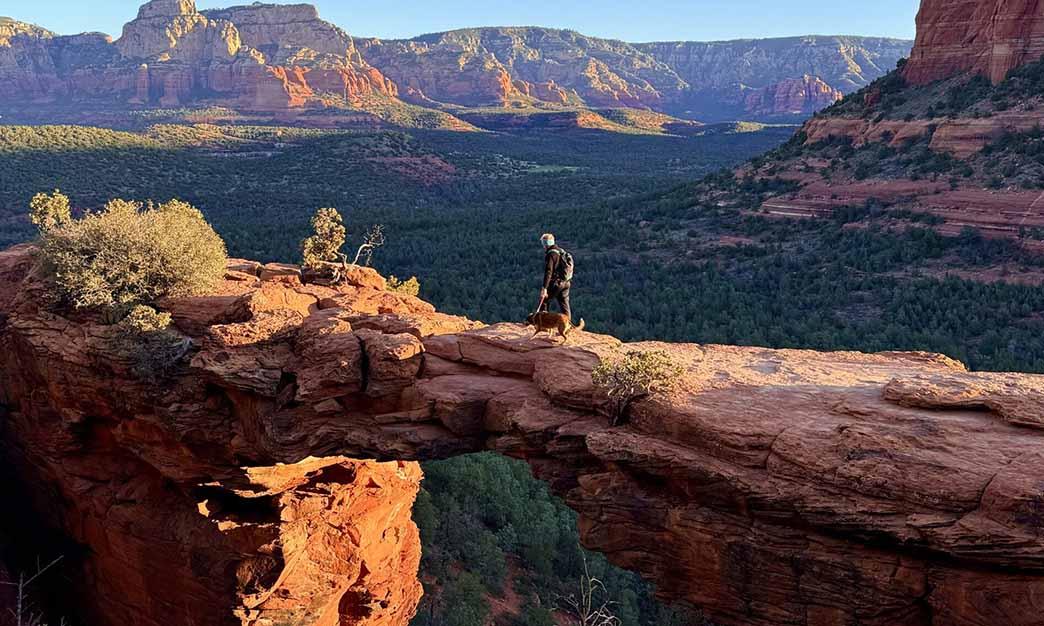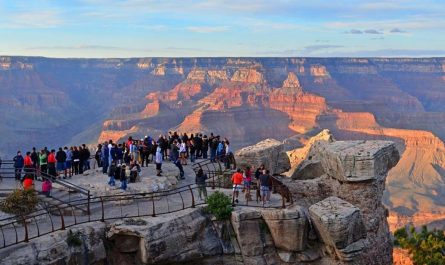Arizona, a vast land filled with endless charm and natural wonders, is home to two of its most iconic destinations: Phoenix and Sedona. As the city that connects the desert with red rock formations, Phoenix is not only the state capital but also a place where modernity blends with the beauty of nature. Sedona, on the other hand, is known for its breathtaking red rock canyons and mysterious geological landscapes, attracting thousands of visitors who seek to witness its awe-inspiring beauty. The journey from Phoenix to Sedona offers not only stunning scenic views along the way but also allows you to experience the hidden mystical allure of this land. Let’s take a journey together to explore the natural wonders and cultural beauty between Phoenix and Sedona.
1. The Modern Charm and Natural Beauty of Phoenix
1.1 Embraced by the Desert: Phoenix’s Natural Scenery
Phoenix is located in the heart of the desert, surrounded by vast desert landscapes. The desert here is not just barren land; it is the birthplace of life and the habitat for countless plants and animals. The Desert Botanical Garden in Phoenix is an unmissable destination, located in the southeastern part of the city. It showcases the rich diversity of the desert ecosystem, with hundreds of species of cacti and various succulent plants. Under the intense sunlight, these plants present a unique beauty. Walking along the garden’s trails, you can feel the serenity and mystery of the desert while gaining a deeper understanding of the power of nature.
1.2 Camelback Mountain: A Beautiful Overlook of the City
One of the most popular hiking and climbing destinations in Phoenix is Camelback Mountain. This mountain, named for its camel-back shape, provides a perfect viewing point from its summit, where you can overlook the entire city of Phoenix and the surrounding desert. From the top, the city and desert blend seamlessly, creating a stunning contrast between modern architecture and primal nature. The hike to the summit, though steep, rewards you with spectacular views, making it the perfect way to experience the natural beauty of Phoenix.
1.3 Cityscape: The Fusion of Modernity and History
Phoenix is not only known for its enchanting desert landscapes but also for its rich urban culture and history. The city features ancient cultural districts alongside modern skyscrapers, showcasing its multifaceted charm. In the city center, many museums and art centers offer opportunities to learn about the local history and culture. The Phoenix Art Museum, which houses a large collection of European, Latin American, and indigenous art, is an ideal destination for art lovers.
2. Sedona’s Red Rock Wonders: Nature’s Masterpiece

2.1 Red Rock Canyons: A Natural Masterpiece
After departing from Phoenix and driving north on Interstate 17 for about two hours, you will arrive in Sedona, a small town famous for its stunning red rock canyons. Often regarded as “one of the most beautiful small towns in the world,” Sedona’s red rock formations are a natural wonder. The red rocks change color as they reflect the sunlight, creating a breathtaking display. There are numerous trails suitable for hiking, such as the famous Devil’s Bridge and Cathedral Rock. This red rock canyon draws visitors from all over the world, especially photographers, who capture its awe-inspiring natural beauty.
2.2 Cathedral Rock: Exploring the Mysterious Energy Vortex
In addition to the red rock canyons, Sedona is also revered for its mysterious energy vortexes. It is believed that Sedona is a “center of earth energy,” and many people visit to find inner peace and strength. Cathedral Rock is one of Sedona’s most popular sites. It is not only a magnificent natural landmark but also a place where many come for meditation and spiritual practice. The combination of breathtaking beauty and the mystical atmosphere provides a unique spiritual experience for visitors.
2.3 Sedona’s Sunset: A Visual Feast
In Sedona, sunset is the most anticipated moment of the day. As the sun sets, the colors of the red rocks become even more vivid, while the clouds in the sky are painted with golden and purple hues. Whether standing on Devil’s Bridge or atop Cathedral Rock to watch the sunset, you will be deeply moved by the extraordinary sight. The sunset here is considered one of the most beautiful in the world, and it is an unmissable visual feast for every visitor to Sedona.
3. Scenic Stops and Activities Along the Way
3.1 Natural Attractions Around Sedona
In addition to the famous red rock canyons, Sedona is surrounded by a variety of stunning natural attractions worth exploring. Oak Creek Canyon, often referred to as one of the most beautiful spots in Arizona, features a serene creek that meanders through a lush, forested landscape. The canyon is a hiker’s paradise, with trails that range from easy strolls to challenging treks, allowing visitors to fully immerse themselves in the natural beauty of the area. As you walk, you’ll encounter diverse plant life and abundant wildlife, making it an excellent destination for nature lovers. Furthermore, Sedona offers a wealth of outdoor activities, including camping under the stars, rock climbing for those seeking adventure, and horseback riding through the breathtaking scenery. These activities offer an incredible way to connect with the landscape and experience Sedona’s natural wonders from a variety of perspectives.
3.2 Native American Cultural Sites
Arizona is rich in Native American heritage, and Sedona is no exception. The area is home to many ancient Native American cultural sites that offer a glimpse into the history and traditions of indigenous peoples. Visiting these sites, such as the ancient dwellings and petroglyphs scattered throughout the region, is an enriching experience that provides a deeper understanding of the Native American connection to the land. One notable site is the Tlaquepaque Arts & Crafts Village, a charming location in Sedona that blends Spanish and Native American influences. This arts and crafts village is a hub for local artisans, offering visitors the chance to purchase unique handcrafted jewelry, pottery, textiles, and artwork that reflect the cultural heritage of the area. Exploring these cultural sites will not only enhance your appreciation of Sedona’s natural beauty but also connect you to its rich history and indigenous culture.
4. Travel Tips: How to Plan Your Trip from Phoenix to Sedona

4.1 Transportation
Traveling from Phoenix to Sedona is straightforward, and the most convenient way is by car, taking the I-17 freeway north for about two hours. The drive is not only easy but also scenic, with sweeping desert landscapes and the towering red rock formations of Sedona on the horizon. For those interested in exploring more hidden gems along the route, there are plenty of opportunities to stop and enjoy roadside attractions or scenic viewpoints. If you prefer to travel by bus, there are also shuttle services that operate between Phoenix and Sedona, though having your own vehicle provides more flexibility for exploring. Whether you drive or take a shuttle, be sure to enjoy the panoramic views and take a few breaks to fully appreciate the beauty of the Arizona desert.
4.2 Best Time to Visit
Arizona’s climate is known for its extremes, but the best times to visit Sedona are during the spring and fall months. From October to April, temperatures are moderate, making it ideal for outdoor activities like hiking, biking, and sightseeing. The fall season is especially magical, with the changing colors of the foliage adding a splash of red, orange, and yellow to the stunning landscape. However, summer months, particularly from June to August, can be very hot, with temperatures often reaching above 100°F. During this time, it’s best to explore the higher elevation areas or plan outdoor activities in the early morning or late evening when the heat is more manageable. Visiting during the cooler months ensures you can comfortably experience everything Sedona has to offer, without the oppressive summer heat.
4.3 Sun Protection and Hydration
Given the intensity of the sun in Arizona, it’s crucial to be well-prepared for the elements, especially if you plan to spend time outdoors. Sunscreen is an absolute must, and it should be reapplied regularly, particularly if you’re hiking or engaging in any outdoor activities. In addition to sunscreen, wearing sunglasses with UV protection and a wide-brimmed hat will help shield your eyes and face from the sun. Because Arizona’s desert climate is hot and dry, staying hydrated is essential. Always carry enough water to keep yourself hydrated throughout the day, especially during hikes or long drives. It’s also helpful to bring snacks like energy bars or trail mix to keep your energy up during your outdoor adventures. Whether you’re venturing through Sedona’s red rock canyons or simply exploring the town, taking these precautions will ensure that your trip is enjoyable and safe.
The journey from Phoenix to Sedona is not just an exploration of natural landscapes but also a spiritual journey. From the mystery of the desert to the grandeur of the red rocks, each stop on the journey is infused with the power and charm of nature. Whether you are a lover of nature, culture, or seeking spiritual peace, this route will leave a lasting impression on you. In Arizona, every breath you take is a moment of intimate connection with nature, and every gaze you cast is a pursuit of a beautiful life.



